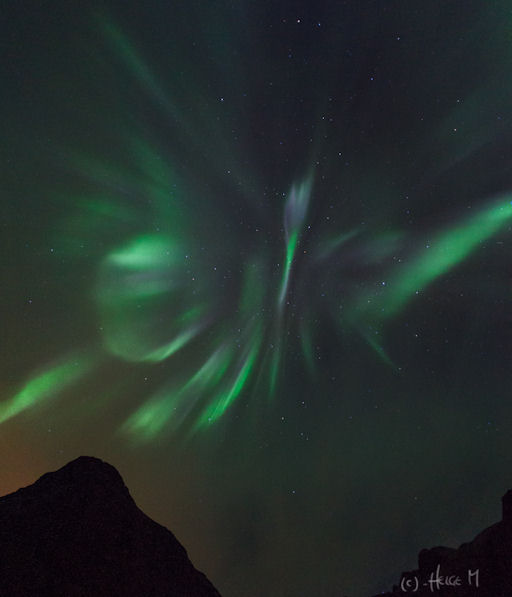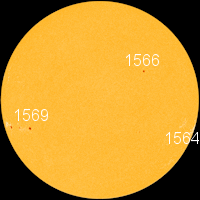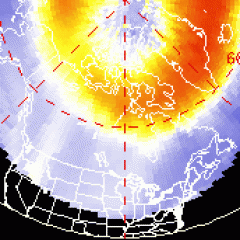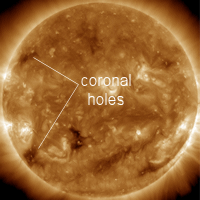~Space Weather Update~ Pair of Coronal Holes, Missle Show, and Polar Lights [1]
MORNING MISSILE SHOW: This morning in Arizona, New Mexico and Nevada, early risers witnessed a plume of iridescent gas twisting in the dawn sky. It was the icy exhaust of a Juno rocket launched from Fort Wingate in Gallup, New Mexico. The Juno was a target for another missile, a Patriot interceptor, launched shortly thereafter. This military test was conducted by the White Sands Missile Range. Images: #1 [2], #2 [3], #3 [4], #4 [5]
POLAR LIGHTS: In the Arctic, springtime ended months ago. Nevertheless, butterflies have been sighted. This one appeared last night over Grøtfjord, Norway:
Helge Mortensen took the picture on Sept. 12th. "The auroras were not a strong as some I've seen, but it was still nice to be outside and watch such a beautiful apparition," he says.
This Northern Lepidoptera appeared when a "kink" in the interplanetary magnetic field (IMF [7]) drifted past Earth, briefly opening a crack in our planet's magnetosphere. Solar wind poured in to fuel the display. At the peak of the storm, the Arctic Circle was glowing from Scandinavia [8] to Iceland [9] to Canada [10].
Earth's polar magnetic field is settling down again, but more Arctic auroras are in the offing, especially on Sept 14-15 when a solar wind stream is expected to reach our planet. Check the gallery [11] for latest images from around the poles.

![]()
Solar wind
speed: 394.7 km/sec
density: 0.3 protons/cm3
explanation [12] | more data [13]
Updated: Today at 1556 UT
![]()
X-ray Solar Flares
6-hr max: C1 0751 UT Sep13
24-hr: C2 0510 UT Sep13
explanation [14] | more data [15]
Updated: Today at: 1459 UT
![]()
![]()
![]()
Daily Sun: 13 Sep 12
![]()
![]()
Departing sunspot 1564 poses a slight threat for M-class [17] solar flares, not Earth-directed. Credit: SDO/HMI
![]()
![]()
![]()
Sunspot number: 68
What is the sunspot number? [18]
Updated 12 Sep 2012
Spotless Days
Current Stretch: 0 days
2012 total: 0 days (0%)
2011 total: 2 days (<1%)
2010 total: 51 days (14%)
2009 total: 260 days (71%)
Since 2004: 821 days
Typical Solar Min: 486 days
Update 12 Sep 2012
The Radio Sun
10.7 cm flux: 105 sfu
explanation [19] | more data [20]
Updated 12 Sep 2012
![]()
![]()
![]()
Current Auroral Oval:
![]()
Switch to: Europe, USA, New Zealand, Antarctica
Credit: NOAA/POES
![]()
![]()
![]()
Planetary K-index
Now: Kp= 1 quiet
24-hr max: Kp= 3 quiet
explanation [22] | more data [23]
![]()
Interplanetary Mag. Field
Btotal: 5.1 nT
Bz: 0.0 nT
explanation [24] | more data [25]
Updated: Today at 1556 UT
![]()
![]()
![]()
Coronal Holes: 12 Sep 12
![]()
![]()
A pair of coronal holes is emerging over the sun's eastern limb. Credit: SDO/AIA



